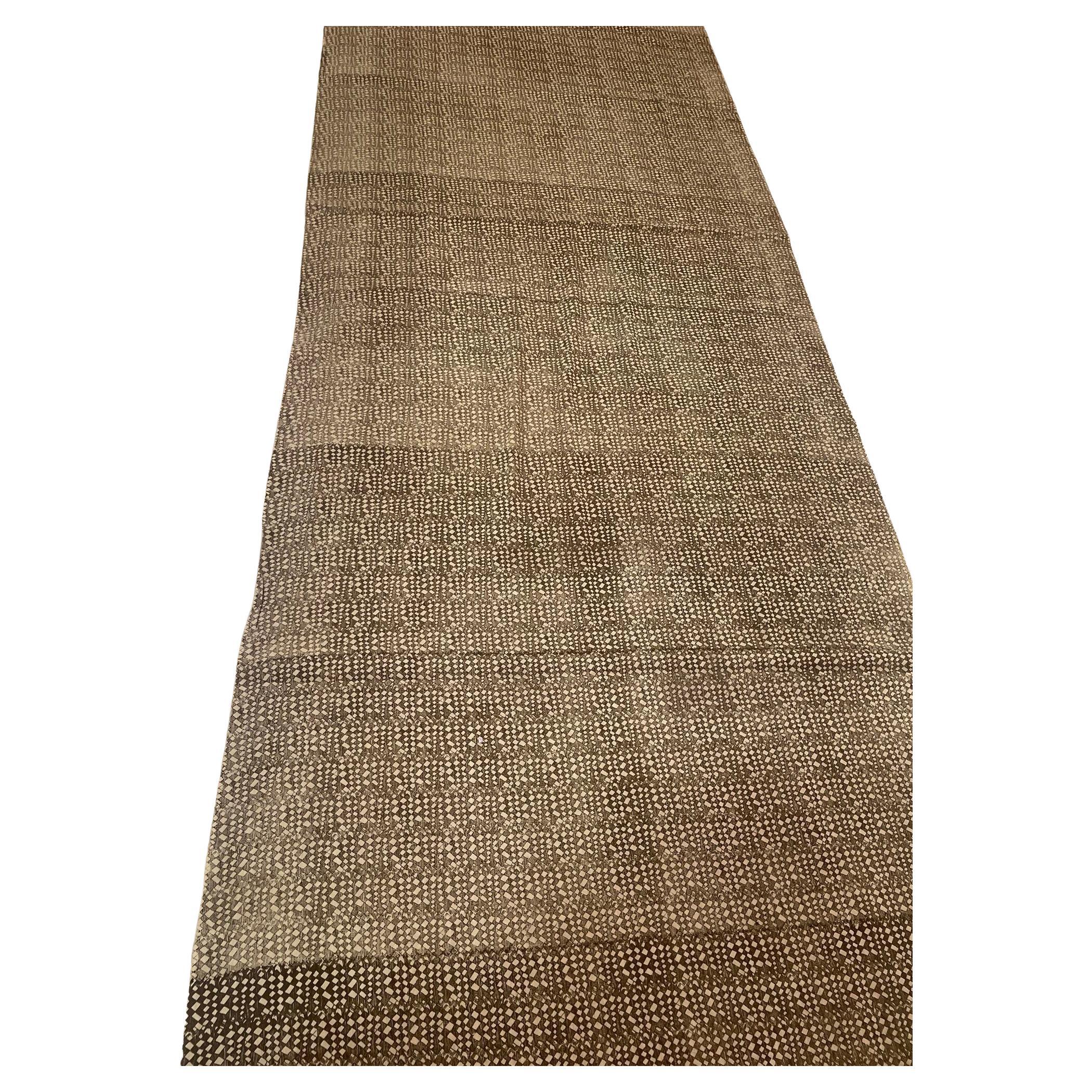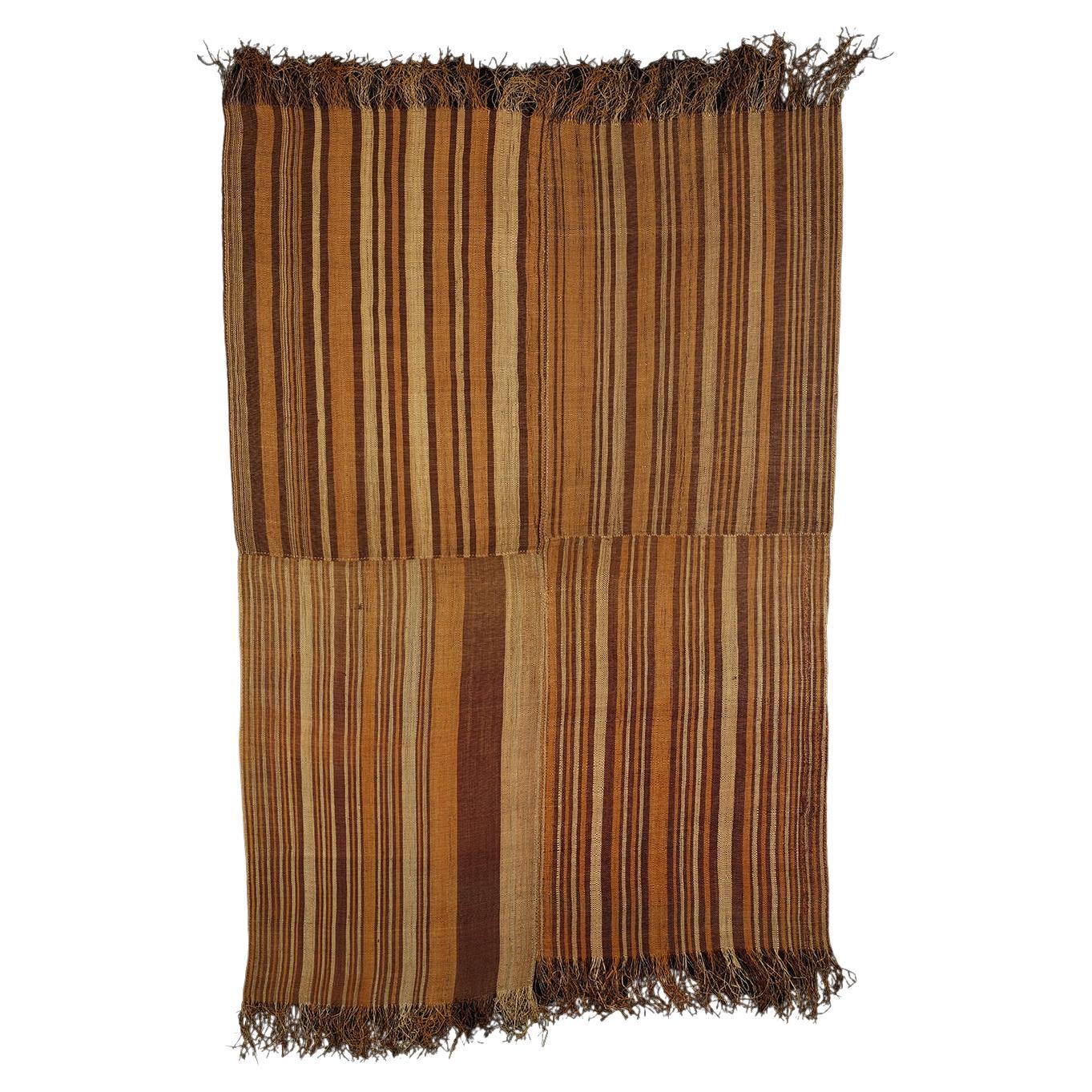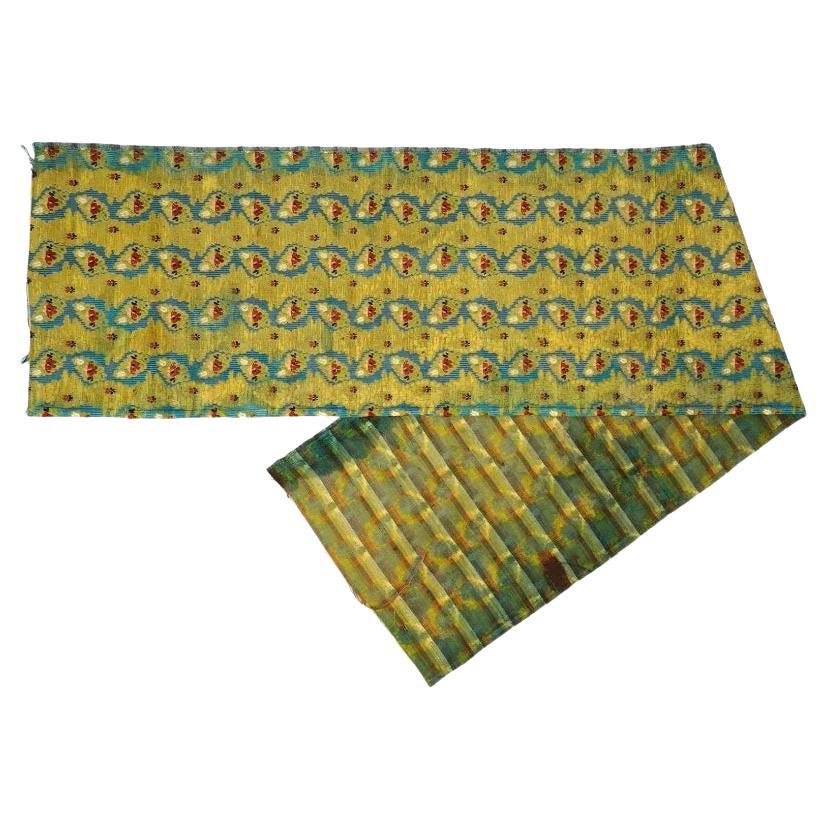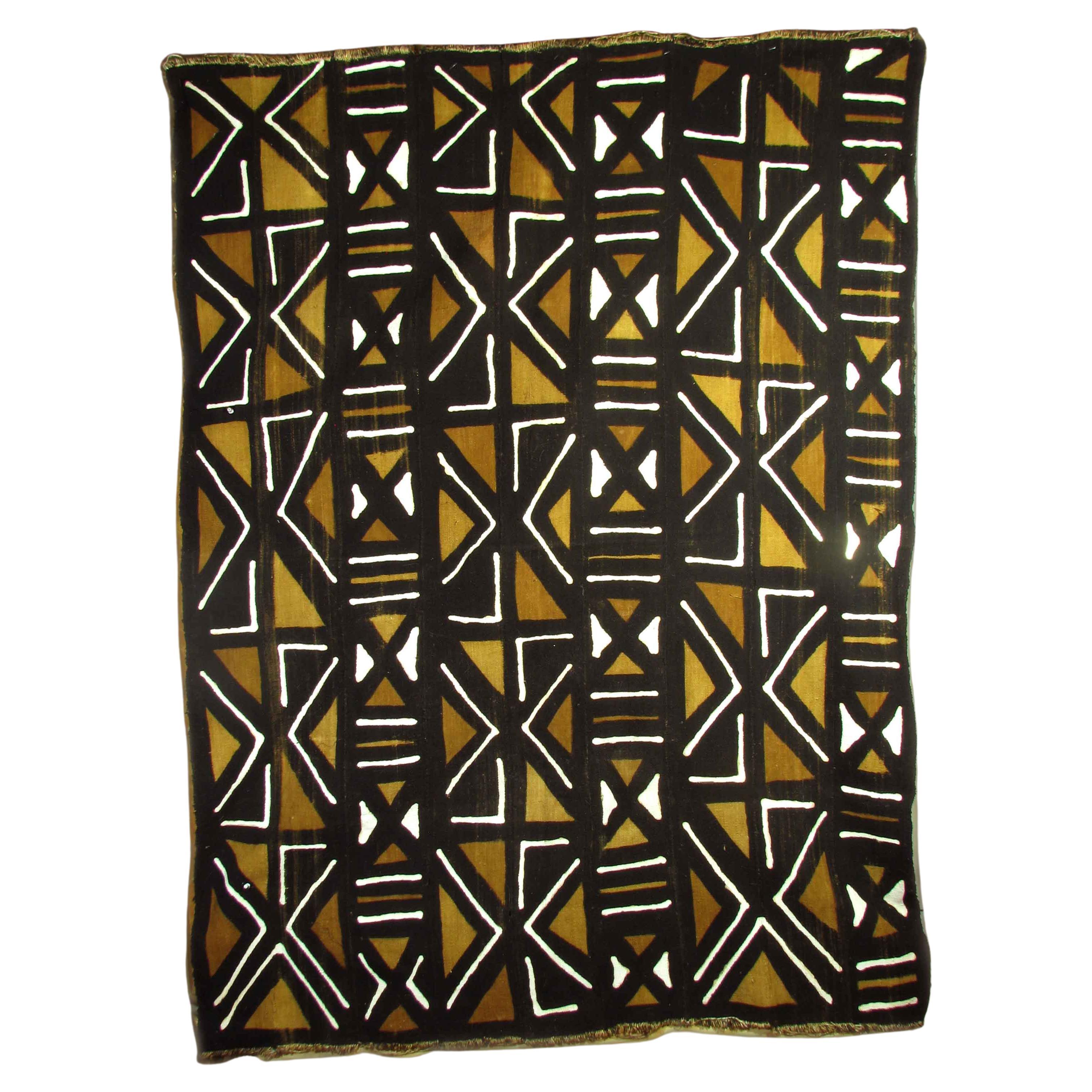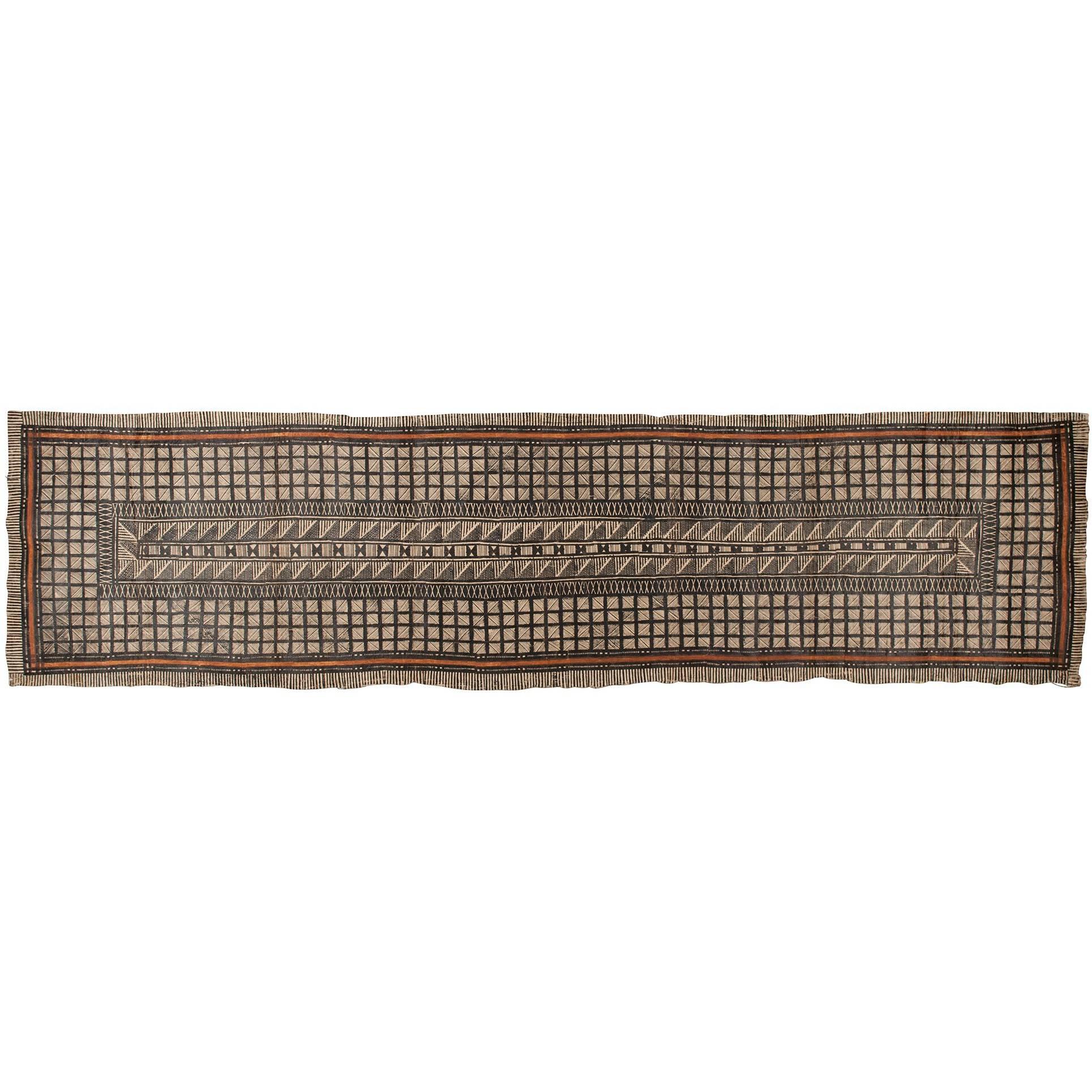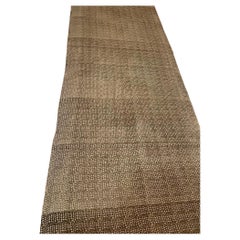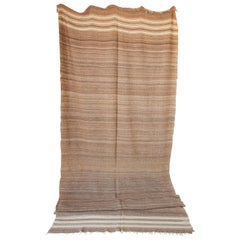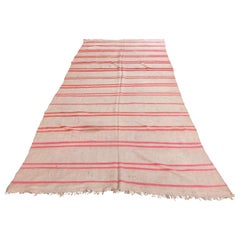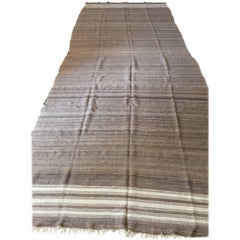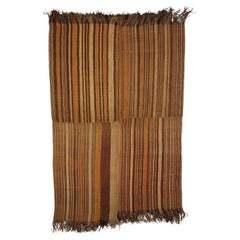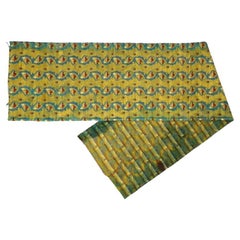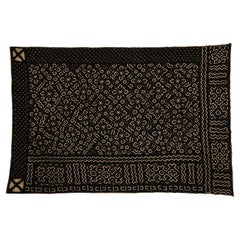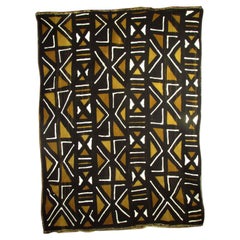Items Similar to Woven African Tribal Bogalan Mud Cloth Textile
Want more images or videos?
Request additional images or videos from the seller
1 of 8
Woven African Tribal Bogalan Mud Cloth Textile
$2,400
£1,834.93
€2,113.47
CA$3,363.14
A$3,754.62
CHF 1,967.37
MX$45,960.29
NOK 24,985.58
SEK 23,558.23
DKK 15,773.01
Shipping
Retrieving quote...The 1stDibs Promise:
Authenticity Guarantee,
Money-Back Guarantee,
24-Hour Cancellation
About the Item
Handwoven Bogolan mud cloth textile from Mali, Africa, Bambara.
It is a handwoven tribal cotton fabric traditionally dyed with fermented mud.
Woven African textile, with geometric tribal designs, earth colors in browns.
100% organic cotton.
Long and narrow.
10 yards x 45" wide.
- Dimensions:Height: 360 in (914.4 cm)Width: 45 in (114.3 cm)Depth: 0.01 in (0.26 mm)
- Style:Folk Art (In the Style Of)
- Materials and Techniques:Cotton,Hand-Woven
- Place of Origin:
- Period:
- Date of Manufacture:20th Century
- Condition:Wear consistent with age and use.
- Seller Location:North Hollywood, CA
- Reference Number:Seller: TR6171stDibs: LU90687729033
About the Seller
5.0
Platinum Seller
Premium sellers with a 4.7+ rating and 24-hour response times
1stDibs seller since 2011
3,060 sales on 1stDibs
Typical response time: 1 hour
- ShippingRetrieving quote...Shipping from: North Hollywood, CA
- Return Policy
Authenticity Guarantee
In the unlikely event there’s an issue with an item’s authenticity, contact us within 1 year for a full refund. DetailsMoney-Back Guarantee
If your item is not as described, is damaged in transit, or does not arrive, contact us within 7 days for a full refund. Details24-Hour Cancellation
You have a 24-hour grace period in which to reconsider your purchase, with no questions asked.Vetted Professional Sellers
Our world-class sellers must adhere to strict standards for service and quality, maintaining the integrity of our listings.Price-Match Guarantee
If you find that a seller listed the same item for a lower price elsewhere, we’ll match it.Trusted Global Delivery
Our best-in-class carrier network provides specialized shipping options worldwide, including custom delivery.More From This Seller
View AllAfrican Batik Cloth Natural Hand-woven Hand-Printed Cotton Fabric Ghana 10 Yards
Located in North Hollywood, CA
African Batik Cloth Natural Hand-woven Hand-Printed Cotton Fabric Ghana 10 yards.
Colors are organic earth tone beige and light brown in geometric design.
Non waxed fabric circa 1950s.
Hand made in Ghana Africa.
Museum Quality Original Long Piece.
380 inches, (30 ft 10 yards Long) x 46 inches Inches Wide( 4ft).
Could be use to make pillows or upholstery.
History of Batik in Africa:
Batik, a traditional fabric art technique, has a rich history in Ghana, West Africa. The practice of batik involves using wax to create intricate patterns on fabric, which is then dyed to achieve the desired design. While batik has its origins in Asia, particularly in Indonesia, it has been embraced and adapted by various African countries, including Ghana.
In Ghana, batik-making can be traced back to the mid-20th century when it gained popularity as a form of traditional textile art. The craft was introduced by artists and artisans who were inspired by the vibrant and expressive nature of batik. These early practitioners experimented with different designs, colors, and patterns, infusing local themes and motifs into their creations.
Over time, batik became an important part of Ghanaian culture and identity. It is not only used for clothing but also for various decorative and functional items such as wall hangings, tablecloths, and accessories. The art form often reflects the rich cultural heritage of Ghana, incorporating symbols, proverbs, and traditional stories into the designs.
Ghanaian batik artists often employ a combination of traditional and contemporary elements, creating a unique fusion of styles. The process of making batik involves applying hot wax to the fabric using various tools to create the desired patterns. The wax acts as a resist, preventing dye from penetrating the waxed areas. After dyeing, the wax is removed, revealing the intricate designs on the fabric.
Today, batik-making in Ghana continues to thrive as both a traditional craft and a form of artistic expression. Many artisans and designers draw inspiration from Ghana's diverse cultural landscape, incorporating elements from different regions and ethnic groups into their batik creations. The art form has also gained international recognition, with Ghanaian batik products being sought after both locally and abroad.
In summary, the history of batik in Ghana is a testament to the creativity and adaptability of artists who have embraced and transformed this traditional technique into a vibrant and culturally significant art form within the country.
HISTORY OF BATIK
In the mid-nineteenth century, the Belanda Hitam, or "Black Dutchmen," are said to have introduced batik to West Africa after serving as indentured soldiers for the Dutch in Indonesia. Returning from their conscriptions with trunks of fine Javanese batik, the opulent patterns captured the imagination of their friends and relatives. However, textile history is complex, and only a handful of recruits returned to West Africa with batik due to delayed payments.
Batik, with roots traced to Egyptian mummies, is a tradition found globally, from Southeast Asia to Japan and India. Europeans, particularly the Dutch, played a significant role in industrializing batik from the seventeenth century onward.
In West Africa, Dutch Scholar Ineke van Kessel suggests that batik arrived from India over trans-Saharan routes. Local populations, like the Yoruba in Nigeria, incorporated wax printing into their textiles. European traders brought wax and non-wax fabrics to West Africa in the seventeenth century, targeting a population ready for their consumption. European designers adapted prints for the African market...
Category
Mid-20th Century Ghanaian Folk Art Textiles
Materials
Cotton
1960s Moroccan Vintage Flat-Weave Brown Tribal Organic Textile
By Berber Tribes of Morocco
Located in North Hollywood, CA
1960s Vintage Moroccan rug flat-weave tribal brown Kilim or blanket.Large size blanket vintage Moroccan rug, handwoven by Berber women in Morocco for t...
Category
20th Century Moroccan Folk Art Moroccan and North African Rugs
Materials
Wool
Moroccan Vintage Organic Hand-Woven Textile, circa 1960
By Berber Tribes of Morocco
Located in North Hollywood, CA
Large handwoven vintage Moroccan Berber Tribal kilim.
This very large blanket was handwoven by the Berber women for their own use.
Handcrafted folk art textiles from the Middle Atlas Berber tribes in Morocco with traditional stripes designs.
Could be used as a floor covering, on a sofa or bed, or for upholstery.
Great Moroccan vintage organic textile to add the Ethnic accent to any style of décor.
Well-suited for a wide range of interior styles: Century Modern, Urban, and Loft interiors.
Midcentury organic vintage handwoven textile...
Category
20th Century Moroccan Folk Art Moroccan and North African Rugs
Materials
Wool
$1,000 Sale Price
20% Off
1960s Moroccan Vintage Flat-Weave Brown Textile
By Berber Tribes of Morocco
Located in North Hollywood, CA
Vintage authentic Moroccan flat-weave brown Kilim rug or blanket.Large size vintage Moroccan textile, handwoven by Berber women in Morocco for their own use.This very light textile, ...
Category
20th Century Moroccan Tribal Moroccan and North African Rugs
Materials
Wool
$1,200 Sale Price
20% Off
Vintage Korhogo Handwoven Mud Cloth Textile Ivory Coast Africa Folk Art
Located in North Hollywood, CA
Vintage Korhogo handspun, handwoven and hand-painted cotton mud cloth by the women of the Korhoga Village who spin the cotton, while the men weave and sew the cloth...
Category
Mid-20th Century Ivorian Folk Art Tapestries
Materials
Korhogo Cloth
Moroccan Vintage Flat-Weave Black Camel Hair Tribal Rug
By Berber Tribes of Morocco
Located in North Hollywood, CA
Vintage Moroccan flat-weave black camel hair Tribal rug.
Large size vintage Moroccan black camel hair ethnic nomadic rug, handwoven by Berber wom...
Category
20th Century Moroccan Tribal Moroccan and North African Rugs
Materials
Wool
You May Also Like
Antique Tetela Textile, DR Congo
Located in Point Richmond, CA
Congolese Textile
Tetela
DR Congo
19th century
Measures: 68 x 41 inches (172 x 104 cm)
Provenance: Ambre-Congo gallery, Brussels
$5,000.
A very rare ...
Category
Antique 1880s Congolese Tribal Tribal Art
Materials
Natural Fiber
18Th Century Antique French Hand Woven Textile
Located in Long Island City, NY
An antique French hand woven embroidered textile wall hanging or table runner. The ware is adorned with floral and foliage ornaments in bright green, red and blue shades. Circa: late...
Category
Antique 18th Century Unknown Textiles
Materials
Textile
$300 Sale Price
40% Off
Bogolanfini "Mud Cloth" Woman's Wrapper
Located in Point Richmond, CA
WOMAN’S WRAPPER (BOGOLANFINI)
Mali, Bamana people
First half 20th century (probably made circa 1970)
Cotton (hand-spun), strip weave; painting with mud and plant dyes
These textil...
Category
Vintage 1970s Malian Tribal Tribal Art
Materials
Cotton
Mud Cloth 'Bogolanfini', Mali, Bamana People, Mid-20th Century
Located in Ottawa, Ontario
A mud cloth (Bogolanfini),
Mali, Bamana People
mid-20th century.
Hand woven 'discharge dyed' cotton
Approximately 71 x 52 in. (180cm. x 132cm.)
A dazzling geometric pattern...
Category
Mid-20th Century Malian Tribal Tribal Art
Materials
Fabric
Mid-20th Century Tribal Tapa Cloth, Fiji
Located in Point Richmond, CA
Tapa cloth made from mulberry fiber with natural pigments, Fiji, mid-20th century.
Category
Mid-20th Century Fijian Tribal Tribal Art
Materials
Natural Fiber
Woven Mat, Kuba People
Located in Point Richmond, CA
A Kuba mat from the Kasai region of the D.R.Congo
These were used on the ground, there are photos showing the Kuba King seated on similar ones.
Raffia cord is wrapped around the thic...
Category
Mid-20th Century Congolese Tribal Tribal Art
Materials
Raffia, Palmwood
